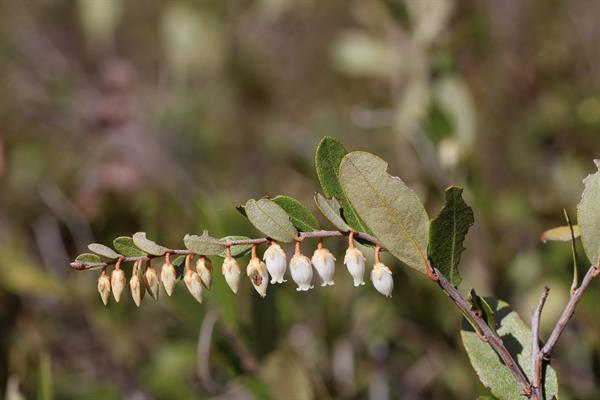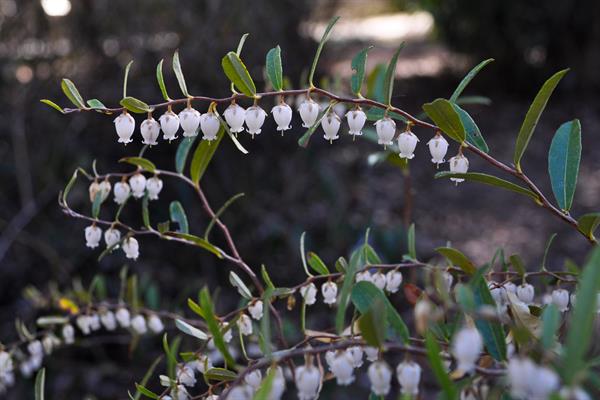
Origin/Endemic status: Native
Taxonomy Comments: A number of varieties have been named (the Eurasian var. calyculata, var. latifolia in Maritime Canada south to n. New England, and var. angustifolia, to which our material would presumably be referred). The validity of the varieties is doubtful (pending more careful study), and for now we regard this as a species lacking taxonomically recognizable varieties.
Synonymy: = C, FNA8, G, K1, K3, K4, NE, NY, S, Tat, W, Luteyn et al (1996); = Cassandra calyculata (L.) D.Don – GW2, RAB; > Chamaedaphne calyculata (L.) Moench var. angustifolia (Aiton) Rehder – F, Il, Pa; > Chamaedaphne calyculata (L.) Moench var. latifolia (Aiton) Fernald – F
Wetland Indicator Status:
- Atlantic and Gulf Coastal Plain: OBL
- Eastern Mountains and Piedmont: OBL
- Great Plains: OBL
- Midwest: OBL
- Northcentral & Northeast: OBL
Heliophily: 7
Hover over a shape, letter, icon, or arrow on the map for definition or see the legend.
 © Scott Ward | Original Image ⭷
© Scott Ward | Original Image ⭷ © Erik Danielson source | Original Image ⭷
© Erik Danielson source | Original Image ⭷ © Scott Ward | Original Image ⭷
© Scott Ward | Original Image ⭷ © Emily Oglesby | Original Image ⭷
© Emily Oglesby | Original Image ⭷ © Scott Ward | Original Image ⭷
© Scott Ward | Original Image ⭷ © Emily Oglesby | Original Image ⭷
© Emily Oglesby | Original Image ⭷ © Erik Danielson source | Original Image ⭷
© Erik Danielson source | Original Image ⭷Feedback
See something wrong or missing on about Chamaedaphne calyculata? Let us know here: (Please include your name and email if at all complicated so we can clarify if needed.)
Cite as...